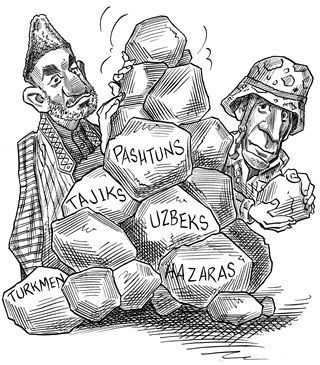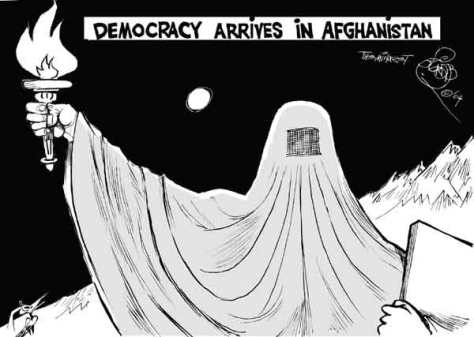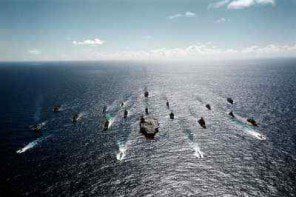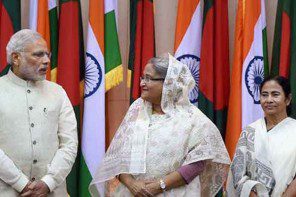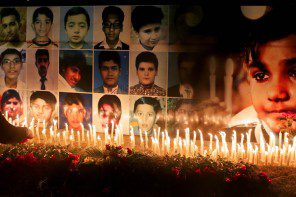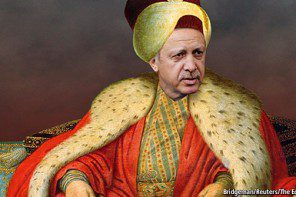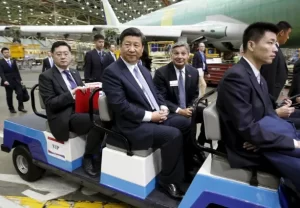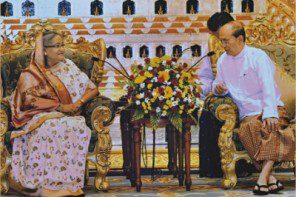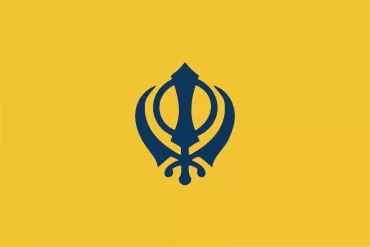Democracy is the form of government that gives government the ultimate legitimacy; nevertheless many countries have failed to implement democratic ideals. In occasions where governments have failed to establish democracy in latecomer democracy countries such as Iraq, Lebanon, Afghanistan, conflicts broke out within factions as the government was not effective in implementing control. Rani Mullen addresses the challenges of state-building in post-conflictual Afghanistan in her article Democracy Building at the precipice in Afghanistan. After the Soviet invasion Afghanistan became a de jure state and she describes how the International community jump start state-building from de jure to de facto, trying to enforce Weberian state structure. De jure states exist because of outside recognition, these are states that do not have capacity to govern themselves. De facto states on the other hand are countries built on Weberian bureaucracy. On rushing into the transitional phase of Afghanistan from de jure to de facto, she explains in the article that the international community has not been very effective as it is not equally applicable in all cases as rules cannot be imposed by outsiders.
Decades of war have devastated Afghanistan, the infrastructure and the political institutions. When the US invaded Afghanistan it was a country of insurgents where the international community was faced with a daunting challenge to rebuild Afghanistan as everything had to be built from scratch. The most immediate thing that Afghanistan lacked was a central government as periods of conflict have eroded governance in the country. Furthermore, on taking up the task of rebuilding state institutions the international community was confronted with the challenge of having to deal with shortage of skilled civil servants as decades of war have destroyed Afghanistan’s human resources.
In order to establish state-building efforts the Bonn agreement was signed. This brought together all the different ethnic or tribal leaders in the country, to establish a temporary government, which was largely dominated by the Tajik members and there was no representation of Taliban within the government. The agreement set out framework and timeframe on setting up institutions to establish a functioning government as well drafting a constitution. This agreement led to the creation of the Afghan constitution commission. In doing so all mujahedeen became part of the security apparatus of the state. The purpose of the Bonn agreement was to maintain peace within the country and to establish some level of governance as the nation had been without a government since 1979 making it a safe harbor for terrorism.
The Bonn Agreement came into effect through the installation of Afghan Interim Authority (AIA) and Hamid Karzai as its chairman. Hamid Karzai was set up as the chairman in the Afghan Interim Authority. The AIA also included a supreme court and a special independent commission. There was some level of optimism that this would help to implement good governance in the country; though the international community lacked the determination and holistic view. An International Security Assistance Force was formed in Kabul to bring security in the country. During this period the US and NATO took a light footprint approach letting the Afghans to take charge of operations relying on local warlords for security. Due to financial and human resource constraints the AIA was not viewed with legitimacy, creating a power vacuum for non-state actors to operate.
While Afghan Transitional Authority (ATA) through the emergency Loya Jirga was successful at bringing its legitimacy in the country, the success of the transitional government depended entirely on financial aid from international governments. On recognizing the fragility of peace, the international community changed the dimensions of implementing security in the country. NATO took over command but continued to rely on local militias to restore peace and stability in the state. ATA was faced with daunting challenges to restore peace in the nation. Afghanistan does not have an army or police force to bring stability and secure the country, and the United States had trained only 5000 soldiers. “The failure to provide leadership in this sector directly resulted in a growing illegal economy and contributed to further destabilization of the security sector.”
The Security sector reform became a failure as there was not much understanding between the two countries. Coordination failure between countries to rebuild Afghanistan created the state building process messy. Even though the UK tried several approaches, it ultimately failed to bring an end to poppy production. The scheme developed by the UK encouraged the poppy growers to grow more poppy expanding the illegal economy. Italy, which was in charge of rebuilding the country’s judiciary, was incapable of leading. The reform of police done by Germany illustrated another failure as within months the police force became vulnerable to rampant corruption. Afghanistan also received very few international donations to build its infrastructure and the absence of peacekeepers also added to the problem of rebuilding. The Bonn Agreement however made significant progress despite fragile security environment and the slow progress of implementation; nevertheless the Iraq war discouraged US to put little effort to rebuild Afghanistan.
In the post Bonn environment the Afghan authority emphasized on three key elements to democratic state-building 1) security 2) governance 3) economic and social development. Over the years the support for the Taliban has declined as people have increased their support for foreign troops as they ensure security. In order to fight the Taliban the US set up Provisional Reconstruction Teams (PRTs). The result of the PRTs remained limited as they only followed the instruction of their respective provincial governors; in addition security provision was limited to the PRT presence in limited areas such as the provincial capitals.
Afghanistan has made some progress, yet there is a long way to go in the socio-economic path.
External Factors
Mullen ended her article looking forward to the new development that would be carried by the new U.S administration. She was hopeful that the new administration would carry out more state-building efforts. Nonetheless, on becoming the newly elected President of the U.S. Barack Obama announced the withdrawal of troops from Iraq and Afghanistan as the nation got burdened with expensive wars. Moreover, the United States under Obama Administration shifted their focus on China as the East Asian region has become very hostile due to China’s expansionist policy. Obama’s announcement of the ‘Asia pivot’explains the shift in strategic interest of the hegemonic power, from Middle East to East Asia. In addition, the American people have become war weary as they are increasingly reluctant to see their country at war.
In addition, after the capture of Osama Bin Laden in the outskirts of Islamabad, Al-Qaeda’s stronghold has been significantly weakened, and the United States no longer possess a national interest to build Afghanistan, the annual review of Afghanistan and Pakistan clearly states –
“Our strategy for Afghanistan and Pakistan is centered on disrupting, dismantling, and defeating Al-Qa’ida in the theater and preventing its capacity to threaten America, our citizens, and our allies. While it will take time to eventually defeat al-Qa’ida, we are taking steps to prevent terrorist groups from regenerating over time or reestablishing a safe haven in the regionthat would pose a strategic threat to the U.S. homeland and to our allies and interests abroad.”
The report serves as an indication that USA’s main strategic interest lies in the elimination of Al-Qaeda, not Taliban since Taliban do not pose a threat to commit global terrorism. In addition, Obama administration has also proposed to hold talks with the Taliban which was being repeatedly put down by the insurgent group, the Afghans of course were deeply dissatisfied by such proposals from the U.S. President.
The Karzai government, which the United States helped to restore, has not made very significant progress either, as transparency, accountability of civil service was not addressed by the Karzai government. Life has changed little for the Afghan people, majority of the people have not benefitted from the Karzai government, and life for them is not about elections or free press but security, economic and social welfare. Thirteen years since the U.S. presence, a major challenge that the country faces is that a vast number of Afghan security forces are illiterate and face dilemma from insurgent infiltration. In addition, the country also has the highest rates of maternal mortality as women are not eligible to seek medical treatment in hospitals; furthermore women are also subjected to domestic abuse.
Nonetheless, some progress has been made, as women who were “once discouraged from leaving their homes, they now take up jobs in schools, government agencies, and aid organizations, and some even serve as members of parliament.” Many Afghans are not happy with Obama’s negotiation with the Taliban. “Now the Americans are leaving. We are not objecting to that. But we didn’t expect that our friends in the West would empower our enemies, the extremists by encouraging them to rejoin the political process.”
Fast forward 2014, Afghanistan has made some significant progress, if Mullen had written the article in 2014, she would have ended it with a tone of slight optimism than with a tone of uncertainty. Even though the security situation has worsened as the United States is gradually removing troops, the Reuters reported that “the (Afghan security force) is in the lead and is better trained and prepared today in 2014 than in 2009, and has greater capacity for providing security.” In addition, 60 per cent voter in the recent Afghan presidential elections turnout rate suggests Afghan people are determined to bring change and they are weary of the Taliban.
The other crucial factor that determines Afghanistan’s stability is Pakistan; a US leaked intelligence report stated that the Pakistan ISI (Inter-Services-Intelligence) has been supporting the Taliban. The report states “ISI is thoroughly aware of Taliban activities and the whereabouts of all senior Taliban personnel,” further stating “The Haqqani family, for example, resides immediately west of the ISI office at the airfield in Miram Shah, Pakistan.” The report included a strong remark of a U.S. intelligence officer, “the Taliban are not Islam. The Taliban are Islamabad.”
It is often perceived by many experts that an unstable Afghanistan is in Pakistan’s national interest as it would provide them more strategic depth to concentrate on the border areas with India. Such claims have been repeatedly denied by the Pakistani officials. A former Pakistani ambassador in an article to Daily Tribune writes that a stable Afghanistan is in the national interest of Pakistan as they would like the Afghan refugees, who are posing a burden to Pakistan, to go home. On the recent Kabul hotel bombing on the 25th of March 2014 which killed eleven people, both the United States and Afghanistan blamed Pakistan for the attack. A statement issued by the National Directorate of Security (NDS), the Intelligence agency of Afghanistan, stated, “NDS [National Directorate of Security] investigations and findings after the tragic incident reveal that Pakistani intelligence services were involved in planning this heinous attack,” further adding that the Taliban’s claim of responsibility “contradicts the ground realities.”
A US defense report of 2012 states that Pakistan is willing to let the Haqanni group operate within their territory “due to their concerns that Pakistan will be left alone to confront an unstable, an unfriendly or an Indian-influenced Afghanistan on its borders.” Such accusations against Pakistan have been constantly denied by the Pakistani authorities, they say that they are too occupied fighting their own war with the Taliban, and it does not seem a logical argument that they would aid the enemy. External factors play a crucial role in Afghanistan’s stability, being a landlocked country and surrounded by predatory neighbours, the country has become a place for fighting proxy wars.
Afghanistan in Comparison to Somalia
In order to understand the comparison between Somalia and Afghanistan, it is first important to refine the concepts of de jure and de facto states. Robert Jackson first comes up with the distinction between de jure and de facto states. De jure states exist only because of the recognition of their territorial boundaries by the international community. These states are mostly post-colonial, they were made independent not based on their capacity to govern the country, and nevertheless any country trying to violate their territorial boundaries would be accused of violating territorial sovereignty. De facto states on the other hand are quite the opposite of de jure states; they are governed by Weberian bureaucracy.
Marina Ottaway later elaborates on these distinctions. Ottaway elaborates on the concept of de facto state, identifying one type ad being de jure as well as de facto, while the other type as she identifies as ‘de jure’ but not ‘de facto’ she names it as ‘raw power state’ for simplicity. Somalia is an example of ‘raw power state’ in this regard. The international community on a state-building mission usually attempts to convert a ‘raw power state’ to a de facto de jure state which Ottaway refers to as Weberian state for simplicity. Afghanistan in this regard is a de jure and a de facto state.
Even though the international community’s effort in Afghanistan has not been quite impressive, they have not failed as they did in Somalia. In the article Somalia: Where the State Isn’t a State, Pham Peter describes Somalia as an entirely collapsed state where fifteen attempts have failed to restore a central government. After dictator Muhammad SiyadBarre fled Somalia in 1991, the country was thrown into a plunge of chaos, with rampant political violence overtaking the parts of the country. The country today provides a classic example of a ‘failed state’ or a ‘rare and extreme version of failed state.’ The international community attempted to build the Transitional Federal Government (TFG) but that only managed to hold on to a few districts. Large parts of Somalia today are controlled by Islamist terrorist group Al-Shabab.
The international community in Somalia focused on building institutions centered on the elite based in Mogadishu. But as Somalia is a tribal society, choosing one elite faction to govern the country only resulted in escalated conflict, whereas the same has not been true of Afghanistan. In Afghanistan, they abolished the existing Taliban government and placed a government in position that was already welcomed by the other tribal leaders. Karzai was the leader of Northern alliance which was also supported by other ethnic leaders, for this reason the case of Afghanistan has achieved success. Furthermore, the Karzai was able to unite different tribes against one common enemy, the Taliban, on the contrary Somalia is deeply fragmented and consensus has been difficult to reach.
The TFG in Somalia could not survive much long as they were being challenged by the ‘Union of Islamic courts.’ In 2005 when TFG moved into Somali territory it was only because of pressure from neighbouring Kenya. Along the same time a new force emerged in Somalia ‘Union of Islamic courts’ that is made up of armed militias with several local tribunals. They managed to take control of Mogadishu after defeating the businessmen and the warlords. Within a few months they successfully extended control over the whole country. However, the government did not last long, because of the Ethiopian invasion in 2006 that was backed by the United States.
In Somalia, the Weberian model of building a state has effectively failed. Rather than state building it has fuelled conflicts. A Weberian model of state building might not be the best possible solution for bringing stability in a country. Some traditional Somali leaders have managed to implement good governance which international community could not. Top-down peace building process does not necessarily work in all situations. In Somalia it completely failed, in Afghanistan the Weberian model of state-building has not been very successful which Rani Muller emphasized in her article.
Both Afghanistan and Somalia are failed states, but the extent of failure is much bigger in Somalia than in Afghanistan. Afghanistan has better security situation in comparison with Somalia where international donors or NGO workers can hardly visit. Besides, Afghanistan has managed to build a national army, even though they are not effective, but Somalia on the other hand does not even have a national army.
State-building in Collapsed State
State building in a collapsed state is often a difficult task. Afghanistan under the Taliban rule was a collapsed state as they destroyed all the functions of the government. The international community tried to build a Weberian state in Afghanistan but it failed as they did not adopt a bottom up approach rather a top down approach which was not suitable for this occasion. Marina Ottaway in her article Rebuilding State institutions in collapsed states asks the question ‘whether outsiders can ever set up institutions?’ In the case of Afghanistan we have seen that it worked in some cases whereas in some cases it did not “the blueprint for reconstructing failed state has become enormously complex.” ]
In addition, Ottaway further stated that external intervention has led to partial successes in state building efforts. She further criticized the international community for focusing on building Weberian state which does not work in all cases. Moreover, donors think that institution building is the best way for building a collapsed state; however the same view is not necessarily shared by the local actors. The way international community carries out state building is to build institutions, but states are not failing because they have bad institutions. States fail because people in that country might not have the culture to respect the institutions. In addition, the author mentions that institutions are a slow process and the international community rushes onto to build state institutions. In the case of Afghanistan it is difficult to assess if it is a failure or a success as the outcome can only be perceived in the years to come. In collapsed states, institutions do not function because the mechanism that is required for institutions to operate is terminated. Therefore, rather than focusing on institution building the international community should instead focus on ensuring that the mechanism is functioning properly.
State-building is a long term commitment and international community might simply back away because of the long term cost; furthermore it can be extremely difficult to build a fragmented society as has been the case in Somalia. Due to ethno-nationalism in Afghanistan, it has a higher probability to fragment in the future. In nations where powers are deeply fragmented two outcomes might happen “consolidating and legitimizing the hold of those who are already in power, or reopening the conflict.” (After the foreign troops leave Afghanistan, conflict might reignite in Afghanistan)
Ottaway also warns of donor supported institution building, as it can be self-defeating, in Afghanistan the aid fund lacked proper utilization as a result it created rampant corruption within the government. The best way to create building would be to ensure the continued presence of foreign troops within the country, to dictate policies from abroad in a rather imperialistic way that can bring stability, however such practices are quite undemocratic in nature and quite an expensive choice. The best choices of state-building are perhaps not always popular, in the case of Afghanistan having read the Ottaway article, I feel that the United States should make every effort to build the country, nevertheless national interest remains a critical deciding factor.
Conclusion
Afghans are willing to stabilize their country and implement democracy. It is reflected by their enthusiasm at the voting day when despite threats from non-state actors they made it to the polling station, voting for the first time for a democratically elected government, nevertheless ethno-nationalism became a challenge to implement the constitution within the country.
Afghanistan is a failed state but not beyond saving. To bring change in Afghanistan the international donors need to build better co-ordination within each other, as most of the foreign aid has effectively been wasted. Moreover, a U.S. National Intelligence Council’s Global Trends 2015 notes that Afghanistan is expected to fail unless employment opportunities could be created. The report further predicts for the next 15 years “Tribal and sectarian disputes will probably continue to arise, be fought out, and shift constantly in Afghanistan as the various players realign themselves.”
Reference
- Rani Mullen “ Democracy Building at the Precipice in Afghanistan” Journal of Democracy, July 2008, Vol. 4 Issue 1, p55
- Mullen, op. citpg71
- “The Obama Administration’s Pivot to Asia” The foreign policy initiative. Retrieved http://www.foreignpolicyi.org/content/obama-administrations-pivot-asia
- Stephen Kinzer, “An extraordinary turn against military intervention” Al Jazeera America, 10 September 2013http://america.aljazeera.com/articles/2013/9/10/an-extraordinaryturnagainstmilitaryintervention.html
- Overview of Pakistan and Afgnaistan Annual report, New York times http://s3.amazonaws.com/nytdocs/docs/541/541.pdf
- Calorine Watt ‘What has the UK accomplished in Afghanistan,’BBC news Retrieved http://www.bbc.com/news/uk-25409959
- ‘US legacy in Afghanistan: What 11 years of war has accomplished’The Christian Monitor Retrieved http://www.csmonitor.com/World/Asia-South-Central/2012/0610/US-legacy-in-Afghanistan-What-11-years-of-war-has-accomplished/%28page%29/2
- Ibid
- ‘U.S., eyeing exit and mindful of past, keeps distance from Afghan election’Reuters http://www.reuters.com/article/2014/04/02/us-usa-afghanistan-elections-analysis-idUSBREA3128N20140402
- ‘Afghan Turnout Is High as Voters Defy the Taliban’New York Times, April 5 2014http://www.nytimes.com/2014/04/06/world/asia/afghanistan-voting.html?_r=0
- ‘In quotes: Excerpts from Nato report on Taliban’BBC news,1 February 2012. Retievedhttp://www.bbc.co.uk/news/world-asia-16829368
- Nijamuddin, A. Shaikh (15 December 2012) “What does Pakistan want in Afghanistan” International
New York Timeshttp://tribune.com.pk/story/307077/what-does-pakistan-want-in-afghanistan-2/ - EltafNajafizada and Andrew MacAskill ‘Afghanistan Blames Pakistan for Attack at Luxurious Kabul Hotel’Bloomberg newshttp://www.bloomberg.com/news/2014-03-25/afghanistan-blames-pakistan-for-attack-at-luxurious-kabul-hotel.html
- Ibid
- Is Pakistan backing the Taliban?, Aljazeera, Inside Story http://www.youtube.com/watch?v=X_ao4p3t2VA
- Robert Jackson, “Quasi-states: Sovereignty, International Relations and the Third World.” Cambridge: Cambridge University Press,1990
- MarinaOttoway, “Rebuilding State institutions in collapsed states”EBSCO publishing, 2003
- Pham Peter “Somalia: Where the state isn’t a state” The Fletcher forum, 2011. Retrieved http://www.fletcherforum.org/2011/05/15/pham/
- Ottaway, op. cit
The writer is a Research Associate at Bangladesh Enterprise Institute.

